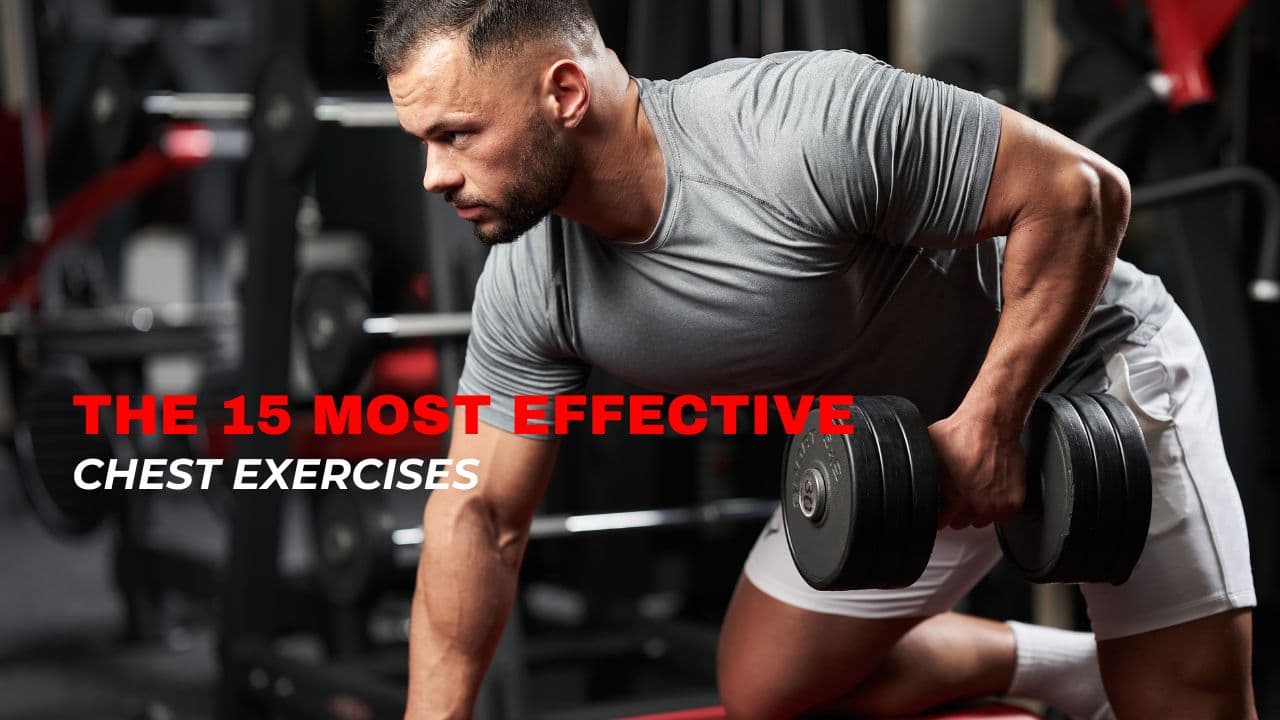Why Chest Training Matters
You know that feeling when you put on a T‑shirt and it just sits right across your chest. Not by accident.
A strong chest is not built from randomly mashing the bench press three times a week. It comes from training the pecs from different angles, with different tools, so your pressing gets stronger, your posture stops collapsing toward your keyboard, and everyday movements feel lighter.
Whether you train in a packed commercial gym, in a quiet garage with a single barbell, or in your living room while Netflix hums in the background, the exercises below cover barbells, dumbbells, cables, machines, and bodyweight. Enough variety so you do not get bored, but still focused enough to actually make progress.
How to Use This Guide
Think of this article as your “no guesswork” chest menu. Fifteen of the most useful chest exercises, pulled from the LoadMuscle library, each with an animation, coaching cues, and at least one way to plug it into your weekly training.
You can skim it while your pre‑workout kicks in, then come back later and cherry‑pick movements based on what gear you have and how your shoulders feel that day.
- Start each workout with one heavier compound press while you are fresh and focused.
- Add one fly or cable movement to really stretch and squeeze the pecs.
- Wrap things up with a bodyweight or explosive drill to lock in technique or build power.
- Rotate equipment or exercise selection every week or two so you cover different chest regions and keep training mentally interesting.
Chest Exercise Quick Reference
| # | Exercise | Equipment | Main Focus | When to Use |
|---|---|---|---|---|
| 1 | Barbell Bench Press | Barbell | Overall chest strength & power | Heavy strength sets |
| 2 | Dumbbell Bench Press | Dumbbells | Balanced activation & stability | Hypertrophy blocks |
| 3 | Dumbbell Fly | Dumbbells | Isolation & deep stretch | Mid‑session accessory |
| 4 | Cable Low Fly | Cables | Lower chest emphasis | Finisher with constant tension |
| 5 | Cable Standing Crossovers | Cables | Inner chest squeeze | High‑rep pump work |
| 6 | Chest Dip | Body weight | Lower chest power | Weighted or high‑volume sets |
| 7 | Push Up (on knees) | Body weight | Beginner mechanics & control | Warm‑ups & regressions |
| 8 | Wide Hand Push Up | Body weight | Outer pec emphasis | Burnout sets |
| 9 | Dumbbell Incline Bench Press | Dumbbells | Upper chest fullness | Moderate‑rep work |
| 10 | Barbell Incline Bench Press | Barbell | Heavy upper chest strength | Strength‑focused incline days |
| 11 | Lever Chest Press | Machine | Stable overload & volume | Safe high‑volume training |
| 12 | Lever Pec Deck Fly | Machine | Peak contraction | Isolation supersets |
| 13 | Cable Incline Fly | Cables | Upper‑chest isolation | Mid‑to‑late session work |
| 14 | Dumbbell Pullover | Dumbbells | Chest & rib cage stretch | Bridge between chest/back days |
| 15 | Clap Push Up | Body weight | Explosive power | Contrast or athletic finisher |
The 15 Most Effective Chest Exercises (With Animations)
Each movement below includes a GIF so you can quickly compare your form to something that actually looks clean. Keep your reps controlled, keep tension through the full range, and pick loads that make the last 2 or 3 reps challenging without turning your technique into chaos.
1. Barbell Bench Press
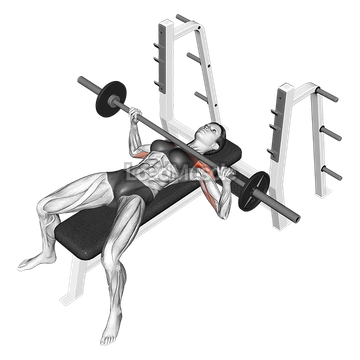
Primary focus: Pectoralis major and overall pressing strength
Why it works: The classic bench is still the big boss for upper‑body power. It lets you move serious weight, recruit a ton of muscle, and track progress in a very simple way.
Programming tip: Use it as your first lift on chest or push days for 3–5 sets of 5–8 reps, resting long enough that each set feels intentional, not rushed.
Coaching cues
- Drive your feet into the floor as if you are leg pressing the ground away.
- Keep your lats tight and shoulder blades pulled together on the bench.
- Lower the bar to mid‑chest with a slight elbow tuck, then press up powerfully in a smooth line.
2. Dumbbell Bench Press
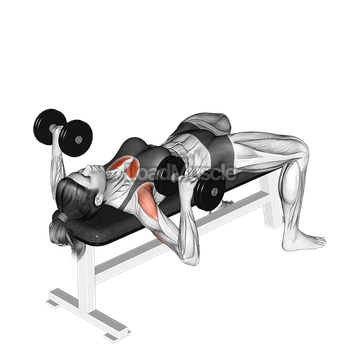
Primary focus: Pectoralis major with left–right balance
Why it works: Dumbbells give each arm its own job so your stronger side cannot cheat as easily. You also get a deeper stretch and a more natural path for your shoulders.
Programming tip: Run 3–4 sets of 8–12 reps after barbell work, or make this your main press if you train at home. It is fantastic for muscle gain phases.
Coaching cues
- Start with palms neutral on the way down, then rotate slightly at the top to squeeze the chest.
- Keep wrists stacked over elbows and avoid letting them drift inward or outward.
- Bring the bells down under control, not like you are dropping groceries on the floor.
3. Dumbbell Fly

Primary focus: Pectoralis major isolation
Why it works: This is your “stretch and squeeze” movement. It reduces triceps involvement, so the pecs have to handle the brunt of the work.
Programming tip: Pair it with presses in a superset or hit 2–3 sets of 12–15 reps in the middle or toward the end of your session. Focus more on feel than ego weight.
Coaching cues
- Maintain a soft bend in your elbows and keep it fixed throughout the movement.
- Lower slowly until you feel a stretch across the chest, not in the shoulders.
- Bring the dumbbells back together like you are hugging a big tree in front of you.
4. Cable Low Fly

Primary focus: Lower chest fibers
Why it works: Cables keep the muscles under tension from start to finish. In a low‑to‑high path, they highlight the lower portion of the pecs and give a very noticeable squeeze.
Programming tip: Use 2–3 sets of 15–20 reps at the end of your workout when you want to “carve in” detail and finish the lower chest.
Coaching cues
- Set the pulleys near ankle height and stand slightly in front of the stack.
- Sweep the handles upward and toward your midline, finishing around hip or belly‑button level.
- Keep shoulders relaxed and down so your traps do not hijack the movement.
5. Cable Standing Up Straight Crossovers
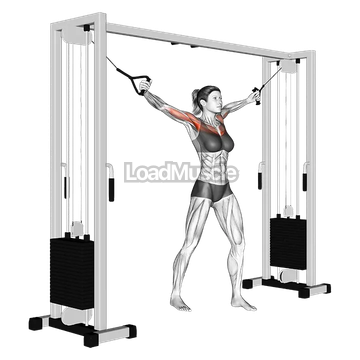
Primary focus: Inner pec fibers and full‑range squeeze
Why it works: By crossing your hands in front of your body, you emphasize the inner chest where people often feel “empty” in T‑shirts. It is very adjustable and very honest.
Programming tip: Sprinkle in 2–3 high‑rep sets at the end of a push workout or between heavy press sets if you are chasing a serious pump.
Coaching cues
- Stand tall with a slight forward lean, one foot in front for balance.
- Keep ribs down, core braced, and avoid leaning way back into the cables.
- Cross your hands slightly at the finish and pause for a half‑second to exaggerate the contraction.
6. Chest Dip (on dip‑pull‑up cage)
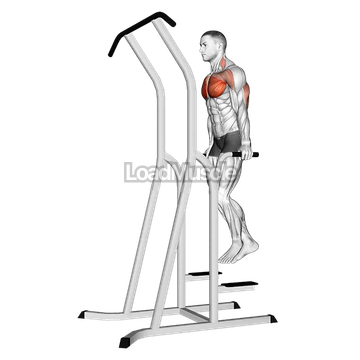
Primary focus: Lower chest and triceps
Why it works: Dips are a bodyweight powerhouse. Once you get strong at them, your lower chest and triceps tend to explode in size and strength.
Programming tip: When you can hit 10–12 smooth reps, start adding weight with a belt or backpack. Use 3–4 sets, controlling the descent for more time under tension.
Coaching cues
- Lean your torso slightly forward and allow elbows to drift out a bit to shift stress to the chest.
- Descend until your shoulders dip below your elbows, but not so deep that it feels like a joint gamble.
- Press back up with intent, not bounce, keeping your legs still.
7. Push Up (on knees)
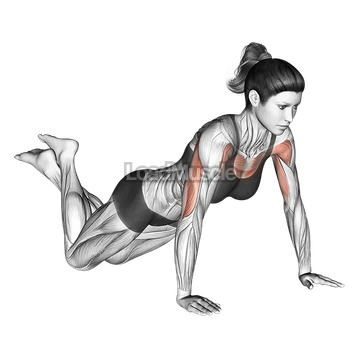
Primary focus: Foundational pressing pattern
Why it works: This version removes just enough load so you can practice good push‑up form without your hips sagging or your lower back complaining. Perfect for beginners, warm‑ups, or deload weeks.
Programming tip: Use 2–3 sets of 12–20 reps at the start of a session to wake up your chest and shoulders, or between heavier pushes for extra practice.
Coaching cues
- From knees to head, keep one straight line. No half‑bridge, half‑banana shapes.
- Hands under or slightly wider than shoulders, fingers spread for stability.
- Lower slowly, pause just off the floor, then press up while consciously squeezing the chest.
8. Wide Hand Push Up
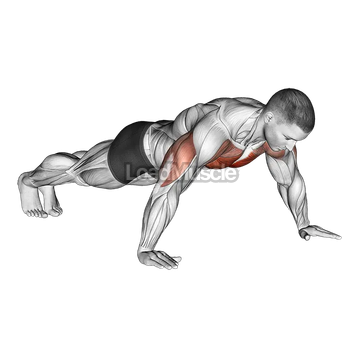
Primary focus: Outer chest
Why it works: By sliding your hands wider, you reduce triceps involvement and crank up the tension across the outer portion of the pecs. It feels different immediately, in a good way.
Programming tip: Slot this in as a burnout finisher. Go close to failure, rest 45–60 seconds, and repeat for 2–3 rounds. Your chest will know it happened.
Coaching cues
- Place hands about one‑and‑a‑half times shoulder width, with fingers turned slightly out if that feels better on your wrists.
- Keep elbows at roughly 45 degrees from your torso, not straight out to the side.
- Lower your chest between your hands and keep your hips from climbing or sinking.
9. Dumbbell Incline Bench Press
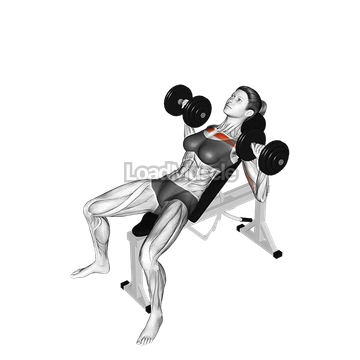
Primary focus: Upper chest
Why it works: Slight incline plus dumbbells equals excellent focus on the upper pec fibers. This is where a lot of people feel like they are “missing” thickness near the collarbones.
Programming tip: After a flat press, run 3–4 sets of 8–12 reps. It is especially useful in phases when you care more about chest shape and fullness than one‑rep max numbers.
Coaching cues
- Set the bench to about 30–45 degrees. Too high and it becomes more of a shoulder movement.
- Pull the shoulder blades back into the bench and keep your chest lifted.
- Press the dumbbells up and slightly toward each other, finishing with control rather than clanking them together.
10. Barbell Incline Bench Press
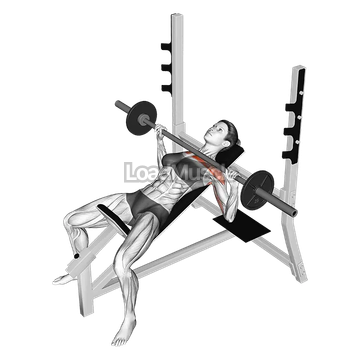
Primary focus: Heavy upper chest strength
Why it works: Similar to the flat bench, but with more attention on the clavicular head of the pecs. It is fantastic for building a strong, proud upper chest that shows under basically any shirt.
Programming tip: Use simple strength patterns like 5×5 or 4×6. Track your loads and try to nudge them up over time while keeping your form honest.
Coaching cues
- Use a medium grip and lower the bar toward the upper chest, not your neck.
- Pause briefly near the chest for stability instead of bouncing.
- Keep your glutes on the bench, drive through your heels, and maintain a steady bar path.
11. Lever Chest Press

Primary focus: Chest hypertrophy with built‑in stability
Why it works: Machines handle the balancing act so you can focus purely on pushing hard and getting close to muscular failure. They are particularly kind to tired joints.
Programming tip: Great for drop sets, rest‑pause sets, or any high‑volume block. Think 3–5 sets of 10–15 reps where the last few reps are slow but controlled.
Coaching cues
- Adjust the seat so the handles line up with mid‑chest when you are in position.
- Control the eccentric for about 2–3 seconds, then press back with intent.
- Keep your back supported by the pad, and avoid shrugging the shoulders toward your ears.
12. Lever Pec Deck Fly
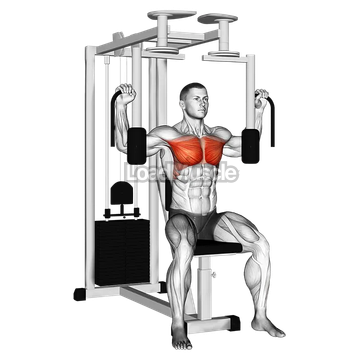
Primary focus: Peak chest contraction
Why it works: The pec deck lets you “lock in” the path of your arms so you can chase that intense chest squeeze without worrying about stabilizing dumbbells. It is one of the most reliable mind–muscle connection machines.
Programming tip: Use it after your presses. Try 2–4 sets of 12–15 reps, sometimes paired with a press in a mechanical drop set. Press first, then fly.
Coaching cues
- Keep forearms vertical and elbows slightly bent, not flared back behind you.
- Bring the pads together and hold the peak squeeze for 1–2 seconds.
- Release back under control so the weight stack does not slam between reps.
13. Cable Incline Fly
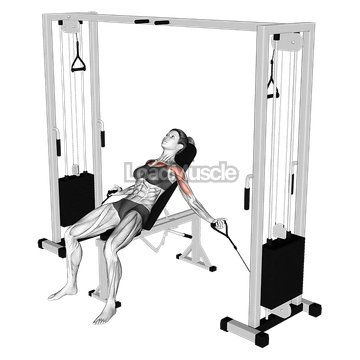
Primary focus: Upper chest isolation
Why it works: You combine an incline bench angle with constant tension from cables. That means the upper pecs are working nearly the entire time, especially in the stretched position.
Programming tip: Aim for 3 sets of 12–15 reps in the middle or later part of your workout. It pairs nicely after an incline press for a focused upper‑chest sequence.
Coaching cues
- Place a bench between the cable stacks and adjust pulleys around shoulder height.
- With a slight bend in your elbows, sweep your arms upward in a hugging motion.
- Keep your knuckles a bit higher than your elbows and avoid letting the cables yank your shoulders forward.
14. Dumbbell Pullover

Primary focus: Pectoralis major and lats with rib‑cage stretch
Why it works: The pullover links chest and back in a single flowing movement. You get a big stretch across the front of the body and some sneaky lat involvement too.
Programming tip: Use lighter weights for 2–3 sets of 10–12 controlled reps near the end of chest or pull days. This is not a “max out” exercise.
Coaching cues
- Lie fully supported on a bench or perpendicular with upper back on the bench, depending on what feels better.
- Hold the dumbbell with both hands above your chest, then lower it in a wide arc behind your head.
- Stop when you feel a deep but comfortable stretch across the chest and lats, then pull the weight back over with control.
15. Clap Push Up

Primary focus: Explosive pressing power
Why it works: Plyometric push‑ups recruit more fast‑twitch fibers and teach you to generate force quickly. That can carry over to heavier barbell and dumbbell pressing.
Programming tip: Use short sets of 4–8 reps. Pair them after heavy presses in a contrast set, like one heavy bench set followed by a quick set of clap push‑ups.
Coaching cues
- Lower under control to the bottom, then explode up so your hands leave the floor.
- Clap quickly and land with soft elbows so you do not jar your wrists.
- Keep quality high. When your height drops and everything feels sloppy, the set is done. For real, stop there.
Weekly Chest Programming Templates
Different training ages and schedules call for different setups. Use the structures below as starting points, then adjust based on your recovery, sleep, and, honestly, how busy life is right now.
| Level | Weekly Frequency | Exercise Mix | Reps & Load Focus | Notes |
|---|---|---|---|---|
| Beginner | 2× per week | 1 press + 1 support move | 10–12 reps, moderate load | Focus on technique, smooth tempo, and pain‑free ranges. |
| Intermediate | 2× per week | Heavy press + fly + bodyweight | 6–12 reps across movements | Blend flat and incline work, sprinkle in cables or machines. |
| Advanced | 2–3× per week | Rotate incline/flat/decline + plyometrics | 5–15 reps with tempo, supersets, overload | Keep weekly sets around 10–20 for chest and monitor fatigue. |
Sample Progression
Here is one simple way to pair movements across different experience levels. You can tweak it depending on which exercise you enjoy or which one your joints tolerate best.
- Beginner: Barbell Bench Press → Push Up (on knees)
- Intermediate: Dumbbell Incline Bench Press → Dumbbell Fly → Chest Dip
- Advanced: Barbell Bench Press (cluster or heavy sets) → Cable Incline Fly → Clap Push Up as a contrast
Build a Personalized Chest Workout With AI
If you would rather not guess your way through sets and reps, you can hand the planning over to LoadMuscle’s AI Workout Planner. It looks at your level, your goals, and your available equipment, then arranges exercises like these into a proper, balanced routine.
It is not magic, but it does save you from scrolling through random social media workouts and hoping they fit your situation.
✔ Adjusted to your current training level
✔ Includes clear set and rep schemes
✔ Built around your priority goals (muscle gain, fat loss, strength, or a mix)
✔ Uses exercises from this article automatically, so the plan feels familiar
👉 Build your own plan here: Online Fitness Planner
Conclusion
A powerful chest rarely comes from one favorite lift repeated forever. It usually comes from smart exercise selection, steady progression, and the slightly boring consistency that nobody posts about but everybody needs.
Use these 15 exercises to attack the chest from multiple angles, plug them into the weekly templates above, and when you want a data‑driven routine that does not rely on guesswork, lean on the AI workout planner. Over time, the combination of good choices and good effort adds up, quietly at first, then all at once.
